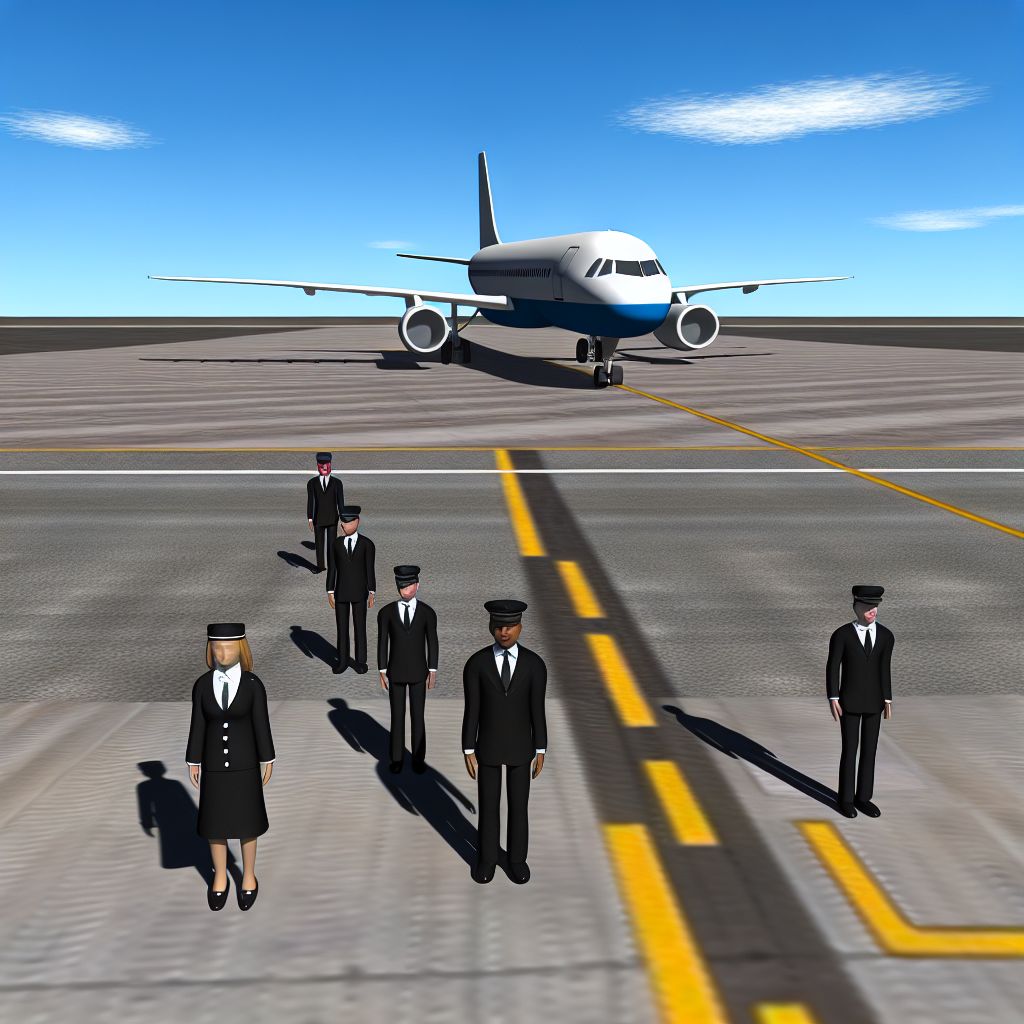Deutsch: Großraumflugzeug / Español: Avión de fuselaje ancho / Português: Avião de fuselagem larga / Français: Avion gros-porteur / Italiano: Aereo a fusoliera larga
A wide-body aircraft is a large airplane with a fuselage wide enough to accommodate two passenger aisles, allowing for a cabin with seven or more seats abreast. These aircraft are commonly used for long-haul international flights due to their capacity to carry more passengers and cargo over greater distances.
Description

Wide-body aircraft, also known as twin-aisle aircraft, are characterized by their wide fuselages, which typically allow for seating arrangements with two aisles. This design facilitates the transport of a large number of passengers, typically ranging from 200 to 600, depending on the specific aircraft model and configuration. Wide-body planes are often used by airlines for long-haul flights because they offer increased comfort, additional amenities, and greater range compared to narrow-body aircraft.
Popular models of wide-body aircraft include the Boeing 747, Boeing 777, Boeing 787, Airbus A330, Airbus A350, and the Airbus A380. These planes are equipped with advanced technology, larger fuel tanks, and more powerful engines, allowing them to operate efficiently on intercontinental routes. Wide-body aircraft often feature enhanced passenger services, such as larger seats, in-flight entertainment systems, and more extensive meal options, making them preferred for lengthy journeys.
In the travel industry, the use of wide-body aircraft is crucial for connecting major international hubs and facilitating global travel. They play a vital role in the operations of full-service airlines, enabling them to offer direct flights between distant cities, thereby reducing the need for layovers and improving overall travel convenience.
Application Areas
- International Travel: Wide-body aircraft are primarily used for long-haul international flights, connecting major cities across continents.
- Cargo Transport: These aircraft can carry a significant amount of cargo in addition to passengers, making them essential for transporting goods globally.
- Tourism: Wide-body planes enable airlines to service popular tourist destinations that require long-distance travel, enhancing the accessibility of these locations.
- Corporate Travel: They provide the capacity and comfort required for business travelers flying on international routes.
Well-Known Examples
- Boeing 747: Known as the "Queen of the Skies," this iconic aircraft has been a staple of long-haul travel for decades.
- Boeing 777: Popular for its range and passenger comfort, widely used by airlines around the world.
- Boeing 787 Dreamliner: Known for its fuel efficiency and advanced passenger comfort features.
- Airbus A330: A versatile wide-body aircraft used on both medium and long-haul routes.
- Airbus A350: Recognized for its cutting-edge technology and fuel efficiency.
- Airbus A380: The largest passenger aircraft in the world, offering unparalleled capacity and luxury.
Treatment and Risks
Operating wide-body aircraft involves significant financial investment and operational complexities. Airlines must manage higher maintenance costs, greater fuel consumption, and the need for specialized airport infrastructure to accommodate these large planes. Additionally, the market demand for long-haul travel can be volatile, influenced by economic conditions, geopolitical events, and health crises such as pandemics.
There are also environmental concerns associated with wide-body aircraft due to their higher carbon emissions compared to smaller planes. However, advancements in aviation technology are continually improving fuel efficiency and reducing the environmental impact of these aircraft.
Similar Terms
- Twin-Aisle Aircraft: Another term for wide-body aircraft, emphasizing the dual-aisle cabin layout.
- Long-Haul Aircraft: Refers to aircraft designed for long-distance flights, often synonymous with wide-body planes.
- Heavy Aircraft: A term used in aviation to describe large aircraft with significant weight, including many wide-body models.
Weblinks
Summary
A wide-body aircraft is a large, twin-aisle airplane designed for long-haul flights, offering greater passenger and cargo capacity. These aircraft are essential for international travel, providing enhanced comfort and amenities for long-distance journeys. Despite operational and environmental challenges, wide-body planes remain a cornerstone of global air travel, connecting distant cities and facilitating the movement of people and goods worldwide.
--
Related Articles to the term 'Wide-body' | |
| 'Configuration' at psychology-lexicon.com | ■■■■■■■■■■ |
| Configuration in the psychology context refers to the arrangement or organization of psychological elements . . . Read More | |
| 'Cargo' | ■■■■■■■■ |
| Cargo (or freight) is goods or produce transported, generally for commercial gain, by Ship or aircraft, . . . Read More | |
| 'Seating' | ■■■■■■■ |
| Seating in the travel context refers to the arrangement and type of seats available for passengers in . . . Read More | |
| 'Airliner' | ■■■■■■ |
| An airliner is a type of aircraft designed for transporting passengers and cargo on scheduled air services. . . . Read More | |
| 'Setup' at quality-database.eu | ■■■■■■ |
| Setup in the quality management context refers to the preparation, configuration, or organisation of . . . Read More | |
| 'load factor' | ■■■■■ |
| Load factor: load factor is the percent of available space on an aircraft or other form of Transportation . . . Read More | |
| 'cabin' | ■■■■ |
| The Cabin is the passenger area on an aircraftthe stateroom aboard a Cruise ship. . . . Read More | |
| 'Aircraft' at top500.de | ■■■■ |
| An Aircraft concerned with any machine that can derive support in the Atmosphere from the reactions of . . . Read More | |
| 'Freight' | ■■■■ |
| Freight in the travel context refers to the transportation of goods and cargo, as opposed to passengers, . . . Read More | |
| 'quay' | ■■■■ |
| Quay: The quay is a pierpronounced the same as " key " and an artificial Landing place for loading and . . . Read More | |
